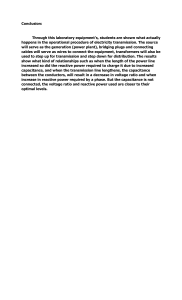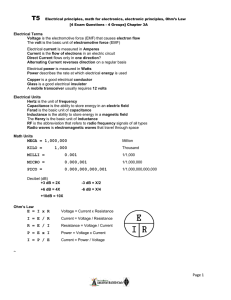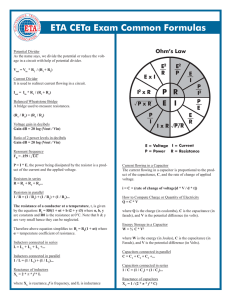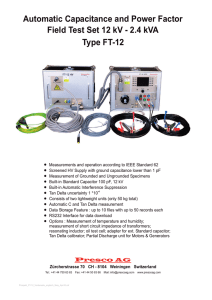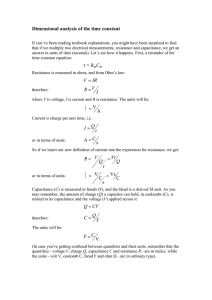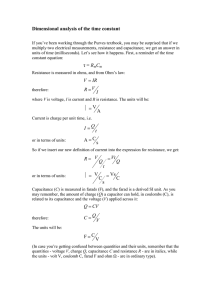Capacitor Circuit Problem Solution: Voltage & Charge
advertisement
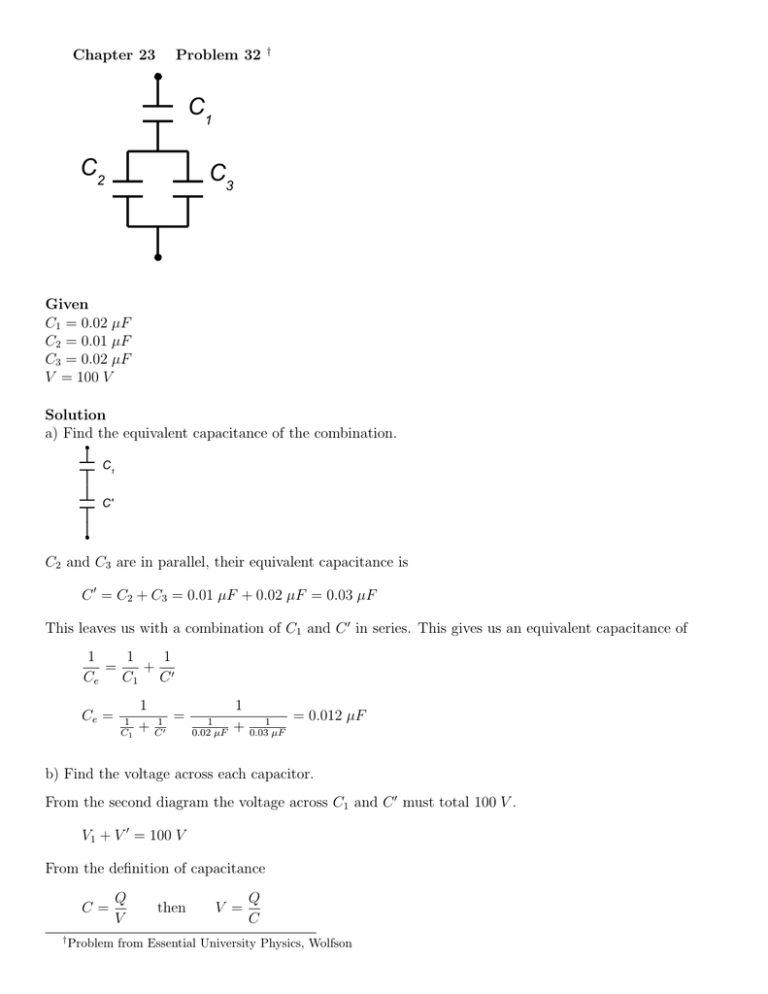
Chapter 23 Problem 32 † C1 C2 C3 Given C1 = 0.02 µF C2 = 0.01 µF C3 = 0.02 µF V = 100 V Solution a) Find the equivalent capacitance of the combination. C1 C' C2 and C3 are in parallel, their equivalent capacitance is C 0 = C2 + C3 = 0.01 µF + 0.02 µF = 0.03 µF This leaves us with a combination of C1 and C 0 in series. This gives us an equivalent capacitance of 1 1 1 = + 0 Ce C1 C Ce = 1 C1 1 + 1 C0 = 1 0.02 µF 1 + 1 0.03 µF = 0.012 µF b) Find the voltage across each capacitor. From the second diagram the voltage across C1 and C 0 must total 100 V . V1 + V 0 = 100 V From the definition of capacitance C= † Q V then V = Q C Problem from Essential University Physics, Wolfson Therefore, Q1 Q0 + = 100 V C1 C 0 When the voltage is first applied, the charge drawn off of C1 will have to accumulate on C 0 , therefore, the charge on each of these capacitors will be the same. Q Q + 0 = 100 V C1 C Solving for Q gives Q= 100 V = + C10 1 C1 100 V = 1.2 µC + 0.031 µF 1 0.02 µF The voltage across C1 is then V1 = 1.2 µC = 60 V 0.02 µF Therefore, the voltage across C 0 is V 0 = 100 V − V1 = 100 V − 60 V = 40 V Since C2 and C3 are in parallel, the voltage across each of them must be the same. Therefore, V2 = V3 = 40 V c) Find the charge on each capacitor. From part b the charge on C1 is 1.2 µC. The charge on C2 is C2 = Q2 V2 Solving for Q2 gives Q2 = C2 V2 = (0.01 µF )(40 V ) = 0.4 µC By the same process the charge on C3 is Q3 = C3 V3 = (0.02 µF )(40 V ) = 0.8 µC Notice that the charge flowing off of C1 is equal to the total charge on C2 and C3 .




